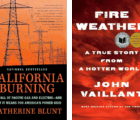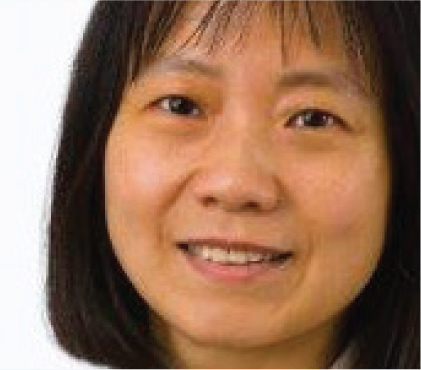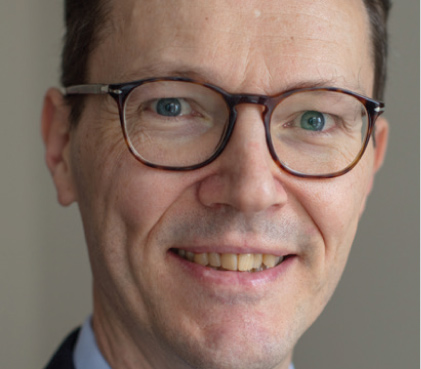Actuarial Review January/February 2020 featured an interview with four CAS members from the inaugural class of experienced catastrophe risk management professionals. They have been recognized by the International Society of Catastrophe Managers and The CAS Institute with the new Certified Catastrophe Risk Management Professional (CCRMP) credential. In this issue, iCAS Director Amy Brener talks with Minchong Mao, Stephen Mildenhall and Rade Muslin about the international aspects of catastrophe management and how the profession is addressing climate change.
Amy Brener: Steve, when we first met, you were based in Singapore. Minchong, you travel frequently to China, and Rade, you moved from Florida to Australia. How do the cat risk credentials apply worldwide?
Steve Mildenhall: Catastrophe risk management is a global phenomenon. Catastrophes happen almost everywhere. The reinsurance industry in particular is very much a global industry that pools risk worldwide. My former firm had cat modelers in all the major insurance centers, as do lots of other companies. While the specifics of the perils vary — maybe some places call it hurricane, some call it typhoon — there are a lot of similarities within the perils. Moreover, there is almost complete similarity within the processes of data aggregation, data preparation, running the models, transformation and communication, etc. CCRMP is a credential that can be used globally. The employers of cat modelers are global, and I think they will appreciate having a credential that is the same throughout the world.
Minchong Mao: The level of practice in catastrophe risk management is quite different among countries. Each country has different priorities and socioeconomic conditions. As a result, catastrophe risk management practices in some countries may not be as mature as in the U.S. The CCRMP designation may serve as a catalyst for the development of education curriculums, regulations and additional regional catastrophe models for developing countries, and promote the best cat risk management practices worldwide.
Each country has different priorities and socioeconomic conditions. As a result, catastrophe risk management practices in some countries may not be as mature as in the U.S..
— Minchong Mao
Rade Musulin: Earlier in my career, I worked in reinsurance across Asia Pacific. I saw examples of good risk management like the New Zealand earthquake, and others where major risks were poorly understood, like Thailand, where there were terrible floods and huge losses that surprised everyone. In Thailand, people mistakenly thought that because the risk wasn’t modeled, it didn’t exist. Cat risk awareness has great social benefits in terms of preparing for events.
AB: Rade, can you discuss how regulators view catastrophe risk in Australia and the role that actuaries play in the process?
RM: After several very serious events about ten years ago, the Australian Prudential Regulation Authority (APRA) signaled that it expected boards and senior management to demonstrate a clear understanding of catastrophe risk to comply with risk management standards and financial condition reporting. This meant that actuaries preparing capital adequacy reports for firms where extreme events pose a material risk needed to ensure they had a solid understanding of catastrophe modeling and risk management. The existing syllabus did not have requisite material, requiring an effort to train actuaries and demonstrate expertise. The CCRMP credential is a way of addressing situations like that.
In addition, rating agencies like AM Best and S&P have strengthened their requirements for disclosure of catastrophe risk and articulation of an insurer’s cat risk management regime where material catastrophe risk exists. There are some significant capital charges associated with catastrophes. This credential can help an actuary demonstrate expertise in this key area and improve rating agencies’ confidence in a firm’s risk management, which strengthens the case for strong ratings.
Until now, none of the major global actuarial associations have had a clear syllabus of material on this topic, particularly in countries where actuaries work across life, health and general (casualty). Further, there has been a view among some segments of the actuarial community (particularly in some other countries) that catastrophe risk modeling is not an “actuarial” area and instead should be the province of scientists, engineers and software developers. That is true in one sense, in that actuaries alone do not possess the breadth of expertise required to evaluate exposure to extreme events — a multidisciplinary approach is needed. But that view is wrong in another sense, in that catastrophe risk is one of the most important tail risks the insurance industry faces and understanding and managing that risk is at the core of our actuarial mission. This credentialing process recognizes that.
You can use catastrophe modeling technology to forecast the effect of future climate scenarios on the housing stock in places like the northeast U.S., and work to “future-proof” building codes.
— Rade Musulin
AB: How does climate change fit into the cat management arena?
RM: The importance of understanding catastrophe risk management will grow in the coming years, as climate change risk assessment becomes a core requirement of shareholders and regulators. There is a huge emphasis on climate risk globally. While the U.S. is still debating the issue, most other countries have moved on and are requiring a range of climate risk assessments and disclosures that actuaries will be a key part of.
In my current job, I lead the climate risk practice for an actuarial firm in Australia. Insurers and other financial institutions around the world are beginning to make extensive disclosures to shareholders and regulators about not only the physical risk posed by climate change but also the transition risk associated with decarbonization and the resulting economic transformation that will occur over the next 20-30 years. As a prerequisite to be able to understand a lot of the impact of climate change on the financial services industry, and insurers in particular, you need a strong foundation of cat risk management, for example to understand the impact of warming seas, poleward migration of tropical cyclones, or stalling events such as Harvey and Dorian.
There is a social problem that needs to be solved dealing with what I refer to as the “mitigation gap.” Hurricanes are likely to become more intense in places like New Jersey and New England due to warming seas and other reasons, yet building codes are not being strengthened quickly enough. In Florida, we saw the chaos that was caused when Hurricane Andrew hit, exposing poor construction practices. You can use catastrophe modeling technology to forecast the effect of future climate scenarios on the housing stock in places like the northeast U.S., and work to “future-proof” building codes — for example, by elevating properties for rising sea levels to cut down losses in the long run.
The strong foundation in catastrophe risk management and modeling underlying the new credentials will position holders of the new credentials to address these issues.
A subsidiary of the Casualty Actuarial Society, The CAS Institute (thecasinstitute.org), provides educational opportunities to quantitative specialists in specific areas, including predictive analytics and data science, and catastrophe risk management. The first iCAS credential, the Certified Specialist in Predictive Analytics, has been awarded to more than 260 members. For more information on the CCRMP and Certified Specialist in Catastrophe Risk (CSCR) credentials, visit CatRiskCredentials.org.














